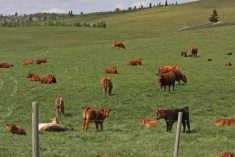I am frequently asked about laws on a particular topic such as agricultural law. Sometimes there are no easy answers because there is a division of law-making powers between the federal and provincial governments.
Also, the law has grown so complex and detailed that there is seldom a law to cover an entire topic.
In Canada, agricultural law covers a huge range of legal issues that goes beyond affecting farmers alone.
Laws pertaining to agriculture run the gamut of crop development and crop types, livestock species, breeding and production and how the finished food in our stores is presented, produced and labelled.
Read Also

Fuel rebate rule change will affect taxes and AgriStability
The federal government recently announced updates to the fuel rebates that farmers have been receiving since 2019-20.
Farm law deals with the regulation of development, production and marketing of agricultural products, both animal and vegetable. Another branch deals with property rights and obligations.
A third branch covers or intersects with the other two and deals with farm equipment, implements, chemicals, fertilizer and seed.
Laws pertaining to the ability to purchase and apply certain chemicals will influence everything from production decisions and costs to the manner in which commodities are marketed and sold.
A subset of these laws has developed, pertaining to regulation of particular sectors of the agricultural industry and economy.
Federal and provincial marketing boards are created and controlled by statute. Standards of production are established by these boards or by regulations themselves.
Quotas for production are often imposed by such boards, which have developed their own case law. Often, a party with a grievance needs to seek out a lawyer with particular expertise with a particular board.
There are federal laws regarding transportation by rail. Such laws intersect with the reality of agricultural production.
Freight rates and restrictions can make or break a profit margin for a producer or other entity.
I have clients who are small-to medium-sized specialty crops purchasers and sellers , and the issues pertaining to rail freight literally mean their financial survival.
I have often had to refer such clients to someone with particular expertise in front of the Canadian Transportation Agency. Don’t go to a heart surgeon to operate on your brain.
As well, you have to consider pure finance, which has no direct link to production, but without which prairie agriculture might fail.
Provincially, there are often restrictions on foreign ownership of farmland.
There are laws determining creditors’ rights of seizure and sale. Federally, income tax laws determine how we order our affairs.
The Bank Act tells us what federal banks can and can’t do to collect debts, and those rights may be modified or limited by other federal laws, such as the Bankruptcy and Insolvency Act or the Farm Debt Mediation Act.
In short, there is a complex web of interconnecting (and sometimes conflicting) laws and policies dealing with everything happening in the farmyard.
Don’t be surprised or frustrated if your local family lawyer wants to get outside assistance.
Rick Danyliuk is a lawyer with McDougall Gauley LLP in Saskatoon. Contact: rdanyliuk@producer.com.














